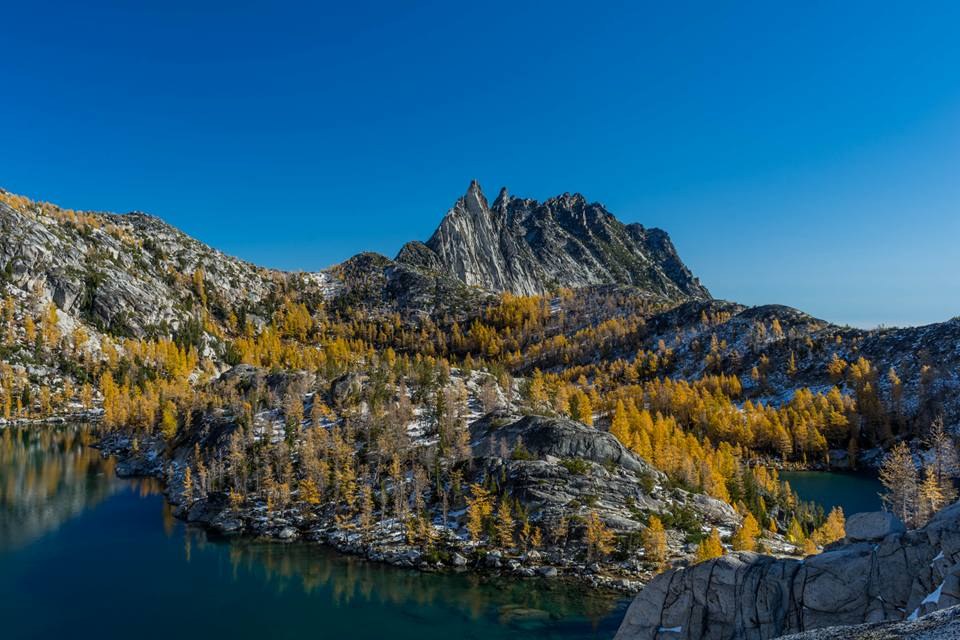
In May of this year, we kicked off the strategic planning process for Vision 2022 - our plan to carry us into the next 5-years and beyond. Participation from members of our community has been terrific and it's critically important to this process. Our strategic priorities have been directly influenced by feedback from our community.
In this blog, we share the feedback from our survey and three 'town hall' meetings, along with the priorities for the next five years. You can jump ahead to:
Survey Results
On August 24, 2017, we launched a 10-15 minute survey to ask for feedback on our future direction. In it we asked a series of open-ended questions to understand what makes The Mountaineers unique, where we provide the most value, and how we're currently performing against our core values. We presented three draft areas of strategic focus: Leaders in Outdoor Education, Engaging Future Mountaineers, and Advocating for Wild Places. We also unveiled 15 potential actions and investments, asking for input to gauge their importance, urgency, and proposed level of support.
The survey was shared via email, blogs, and social media. It ran for 2.5 weeks, closing on September 10, 2017. Ultimately, 953 people shared their feedback with us, 85% of whom are members. The demographics of those completing the survey were consistent with our previous survey results, with the gender of respondents pretty evenly split, 30% having children under 18 living in the home, and 89% Caucasian. The survey had a 44% completion rate.
To analyze the results, we had help from Matt Sullivan, a Steering Committee Member and Former Board Member, and professional researcher. For the open field responses, I worked with our Director of Communications Kristina Ciari to read and categorize each response into one or more categories. Note: When we sliced the data by member vs. non-member, and complete vs. incomplete, we saw no statistically significant difference between the data. Therefore we chose to include all of the answers in our analysis to give us a more clear picture of the community perspective.
Below are highlights of our key learnings. To see the entire analysis, including samples of the open text responses and the graphs, please download the Survey Results document.
Key Questions
Our questions were designed to help us find out which of our chosen priorities were most important and had the most support, and also identify areas of caution or things we might have missed. We asked a number of rating questions and "open ended" questions to understand the feedback from our community. The key open ended questions were:
- What do you personally value about The Mountaineers?
- The Mountaineers has five Core Values. How do you think our organization is doing to meet each of these values today?
- Thinking about the next 3-5 years, what's the single most important thing The Mountaineers should do to have the most positive impact on our community?
We also asked folks to rate our current priorities and how we're performing:
- How important are the following three strategic priorities? [Choices were: Leaders in Outdoor Education, Engaging Future Mountaineers, Fierce Advocates for our Wild Places]
- Think about The Mountaineers as an organization today. How well are we performing in these [three strategic] areas?
Key Findings
After our first round of gathering feedback, we felt that the community strongly supported the three strategic areas we had worked together to identify. When we asked about these priority areas in our survey, we again saw strong support/alignment. All three strategic priorities scored above 80% when you combined the top two category scores (Extremely Important, Important). To underscore, our expert Matt told us that anything above 60% combined score in the top two categories is highly significant. Advocate for Wild Places scored the highest, with 13% more importance than the next on “extremely important”.
- Fierce Advocates: 87% top 2
- Leaders In Outdoor Ed: 85% top 2
- Engage Future Mountaineers: 84% top 2
When we asked people what they personally value about The Mountaineers (an open-ended question with no previously written answers from which to select), 50.6% of responses wrote a comment about our education programs. Skill development, community, conservation, safety, and volunteerism also scored highly. We noticed these have a strong alignment with our core values, and were surprised to not see youth programs cited more frequently (perhaps due to the demographics of those taking the survey, or because our youth programs are relatively new).
When we asked about how we're performing against our core values, we saw that overall scores were strong. We're performing best in adventure, education, volunteerism, and have the biggest opportunity to improve when it comes to community. Note: When we wrote these core values in November, many of them were reflective of who we are today and where we've come from. One, community, is more aspirational: "we provide opportunities for all - a diverse and inclusive outdoors inspires unity, respect, and passion for the places we love." We can do better as it relates to "a diverse and inclusive outdoors", and a few of our key priorities in this next strategic plan seek to address that issue.
Thinking about the next 5-years, we have big aspirations so we asked respondents to identify the single most important thing we can do to make a difference. The answers showed significant support for relatively new priorities like inclusion and youth, a need to continue to focus on our classes and supporting volunteers, and reiterated that we should double-down on our commitment/focus on conservation and advocacy.
To dig deeper, we had a series of questions where we asked people to individually rank the importance each of 15 priorities. Overall, each priority received warm to strong support, with no priority falling low enough that we would consider removing it from the list. We saw concerns related to when, how, and where we would expand physical capacity (i.e. build new program centers), and strong concerns for approach and scope of climate change, which we addressed by reframing this priority as 'sustainability' in our town hall sessions. We also heard strong feedback that our volunteers want to maintain ownership over courses.
Bonus: Our survey tool summarizes "word clouds" for analysis and I really liked this one because it shows that 'people' are really at the center of everything at The Mountaineers:
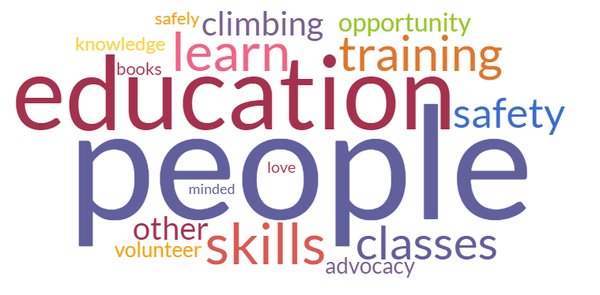
Town Hall Recaps
Like we did in June, in October we hosted three town hall listening sessions for the north sound, south sound, and central sound communities. Each night we had 12-22 attendees, representing an array of interests, experience, and activity areas. At each meeting we started with introductions of those in the room and provided an overview of the Vision 2022 process, walked through the survey results, and discussed its implications as a group.
Next came time to do the work as a team. We distributed "menus" to everyone and I walked through our different strategic priorities outlined on the menu (download menu). Each priority defined estimated resources required, urgency, and reach/impact.
The menu looked like this (download menu):
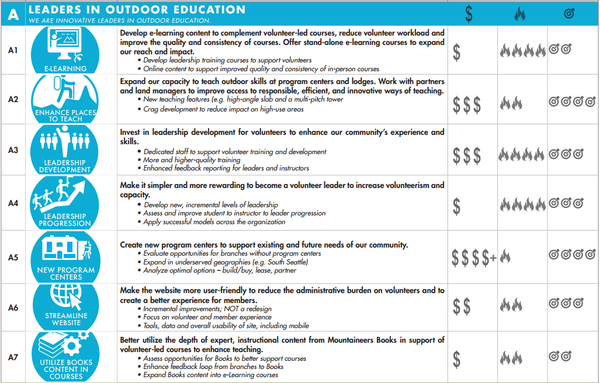
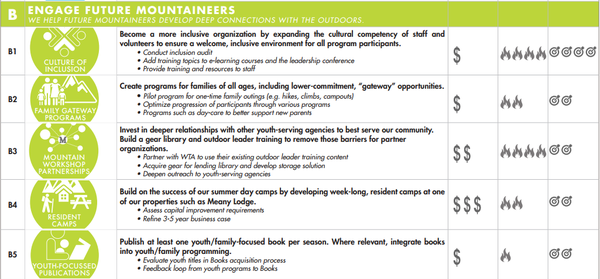
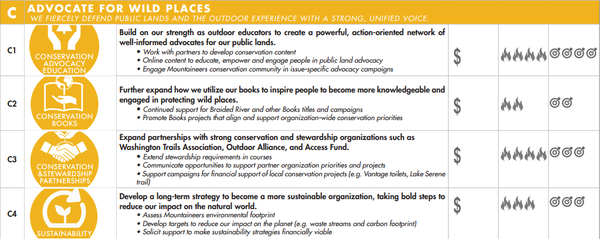
After providing an overview of the items, we explained that each attendee was going to receive a pack of "Mountaineers Bucks" - similar to Monopoly money. They could use that money to purchase anything on the menu, with each Mountaineers Buck corresponding to one dollar sign on the menu. In total there were 27 dollar signs on the menu and each person received 15 bucks to spend. They could use that money to purchase whatever they wanted to help demonstrate what priorities they cared about most. Before we could begin purchasing however, we divided the attendees into groups to discuss what they felt was worth investing in, and why.
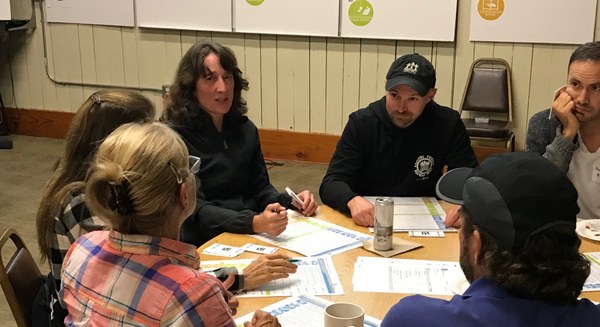
After the purchasing activity, attendees took their new investments and pinned them to boards so we could all see what was bought and discuss as a group. This allowed everyone in the room to get a visual queue of what attendees felt was most important.
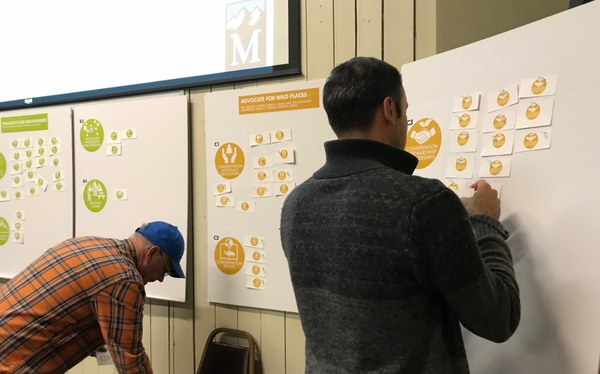
Key Takeaways
As with the survey, the Town Hall sessions reinforced that we are on the right path with our strategic priorities. There was little opposition to the things we proposed, and we heard the following feedback from participants:
- Leaders in Outdoor Education: Our community thinks it's critically important that we invest in our leaders, and our plan will heavily incorporate that feedback. We've also heard strong support for enhancing places to teach, be it through new program centers, expanding existing infrastructure, or developing new outdoor education spaces.
- Engage Future Mountaineers: Developing a culture of inclusion is a top priority to growing our community in the future. We also saw broad support to evolve and grow what we're doing to engage youth and families, be it through new partnerships, deepening existing offerings, or launching new "gateway" programs.
- Fierce Advocates for Wild Places: The survey showed us that, while we're doing a lot for our members and community when it comes to advocating, we need to do more to educate and engage people in these efforts. The town halls underscored the need to invest in advocacy education, partnerships, and sustainability.
Based on what we heard at the town halls, we summarized a total count of "Mountaineers Bucks" investment dollars in each of our priorities, and the sum total of $$$ represented in those investments (download summary report). We will use these figures when allocating future resources against our strategic plan.
As a key next step we will reconvene the Vision 2022 steering committee, continue the steps to launch a successful campaign feasibility study, and meet with our Board at the annual retreat to discuss a draft plan in more detail. Our goal is to complete the final plan for approval by our Board at the January meeting.
Thank you to everyone again for your participation in this process. This is YOUR strategic plan, and I hope you feel well represented by the final product.
Background
In our kickoff blog we outlined the process and our ultimate goal to establish a bold, pragmatic, and inspiring plan to carry forward our legacy of volunteer-led outdoor education and conservation advocacy. Through this work we are ensuring our impact will be even greater than it is today, 111 years from now, and beyond.
We are working with BDS Planning to help guide this process, and we assembled a Vision 2022 Steering Committee to hone in on our vision. It will be evolutionary, building on the progress of Vision 2017, and will use our core values, outlined at our November 2016 Board Retreat, as guiding principles for the plan.
In June we hosted three 'town hall' meetings to hear from members and leaders in our community in the south sound, north sound, and central sound. This followed two similar sessions with our program center and publishing staff, as well as conversations with our Board of Directors and Advisory Committee.
In August we distributed a Vision 2022 Survey to our members and folks in the broader community. We shared these learnings and further honed the language around our priorities in the Sept/Oct Town Hall Listening Sessions.
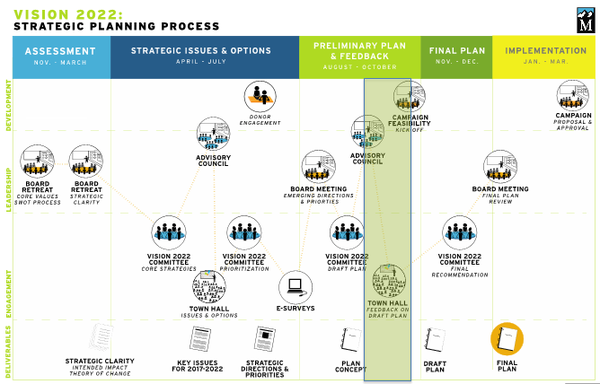
Through this process, we have endeavored to be as thorough and transparent as possible. The participation of our community is absolutely paramount to the success of this plan. For more information, take a few minutes to read through our Vision 2022 blogs.
 Tom Vogl
Tom Vogl